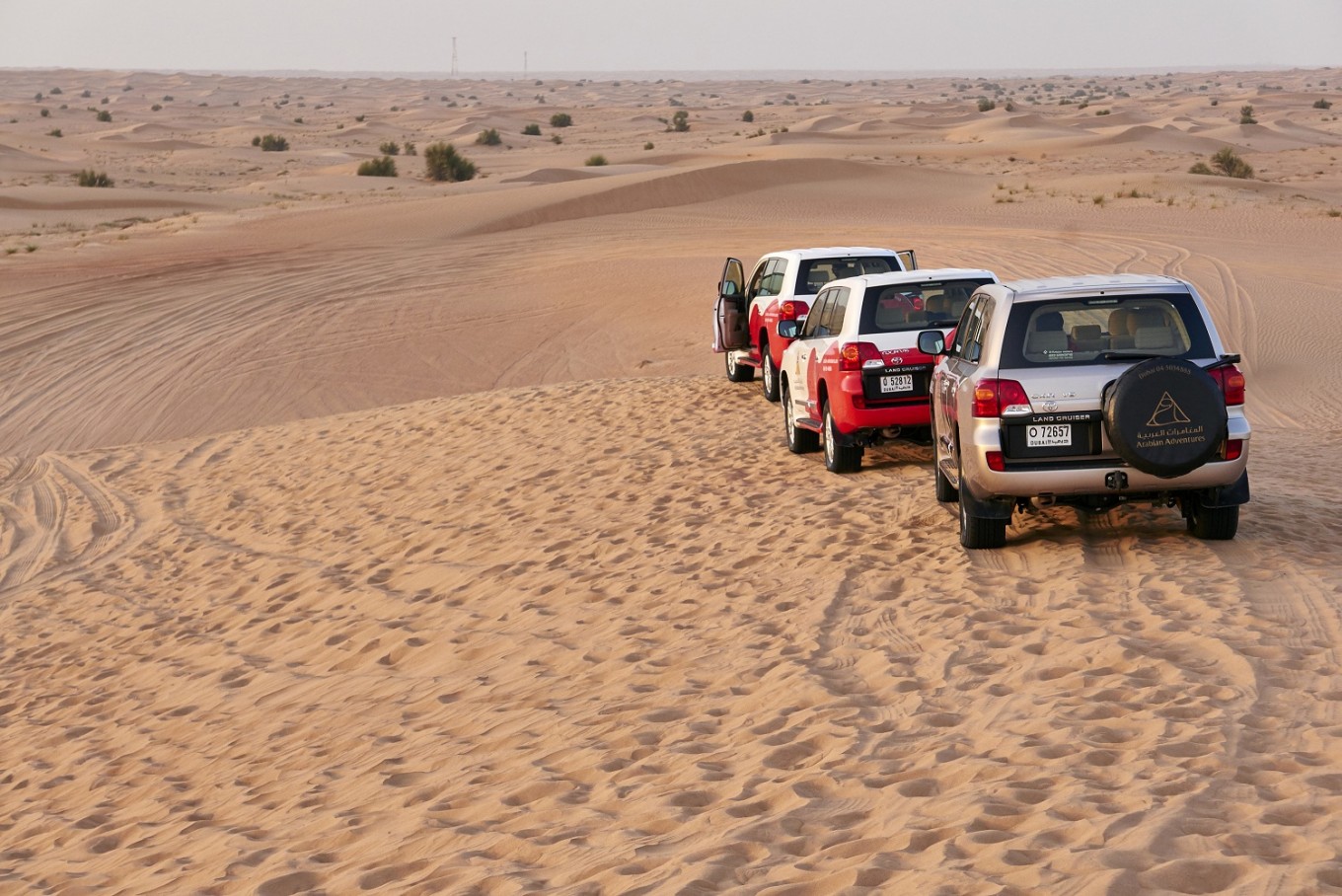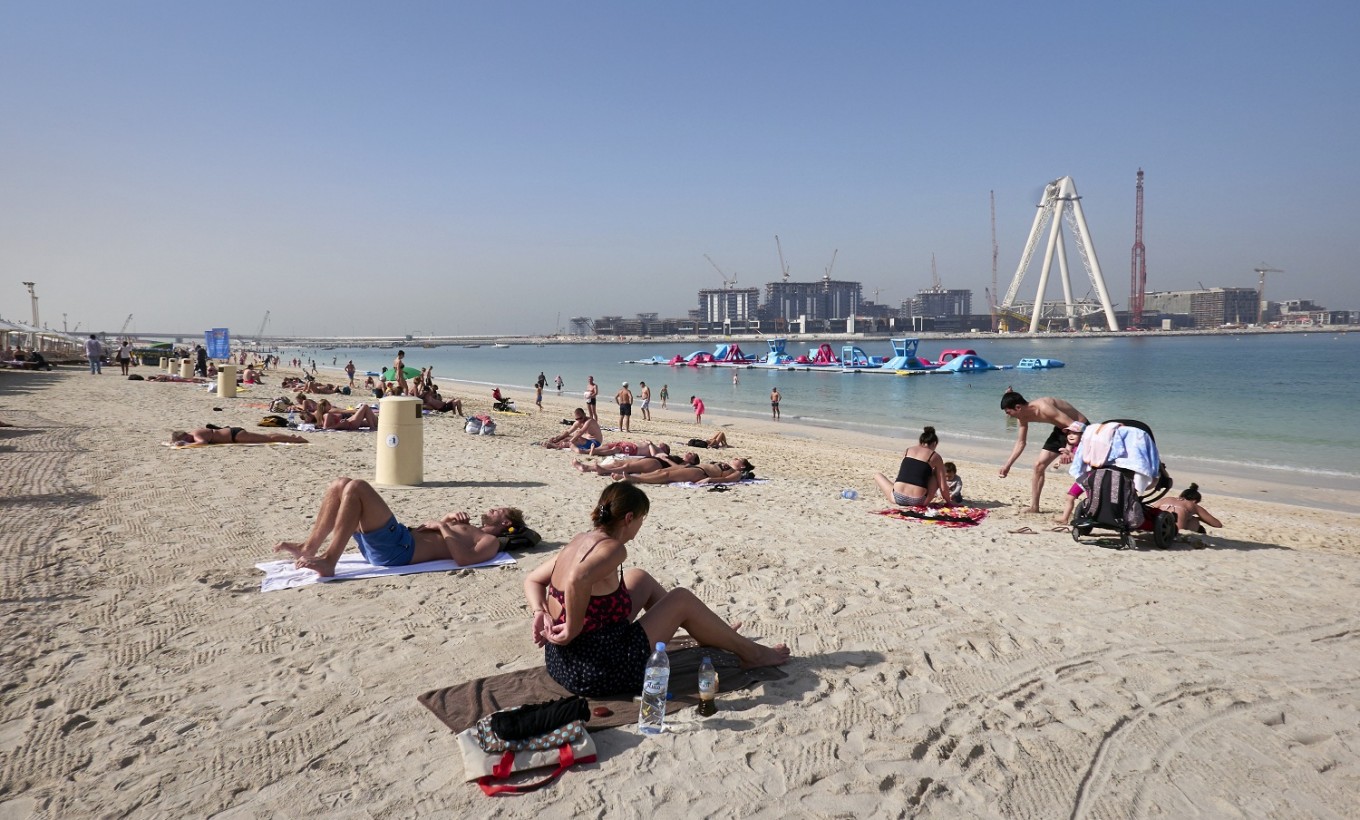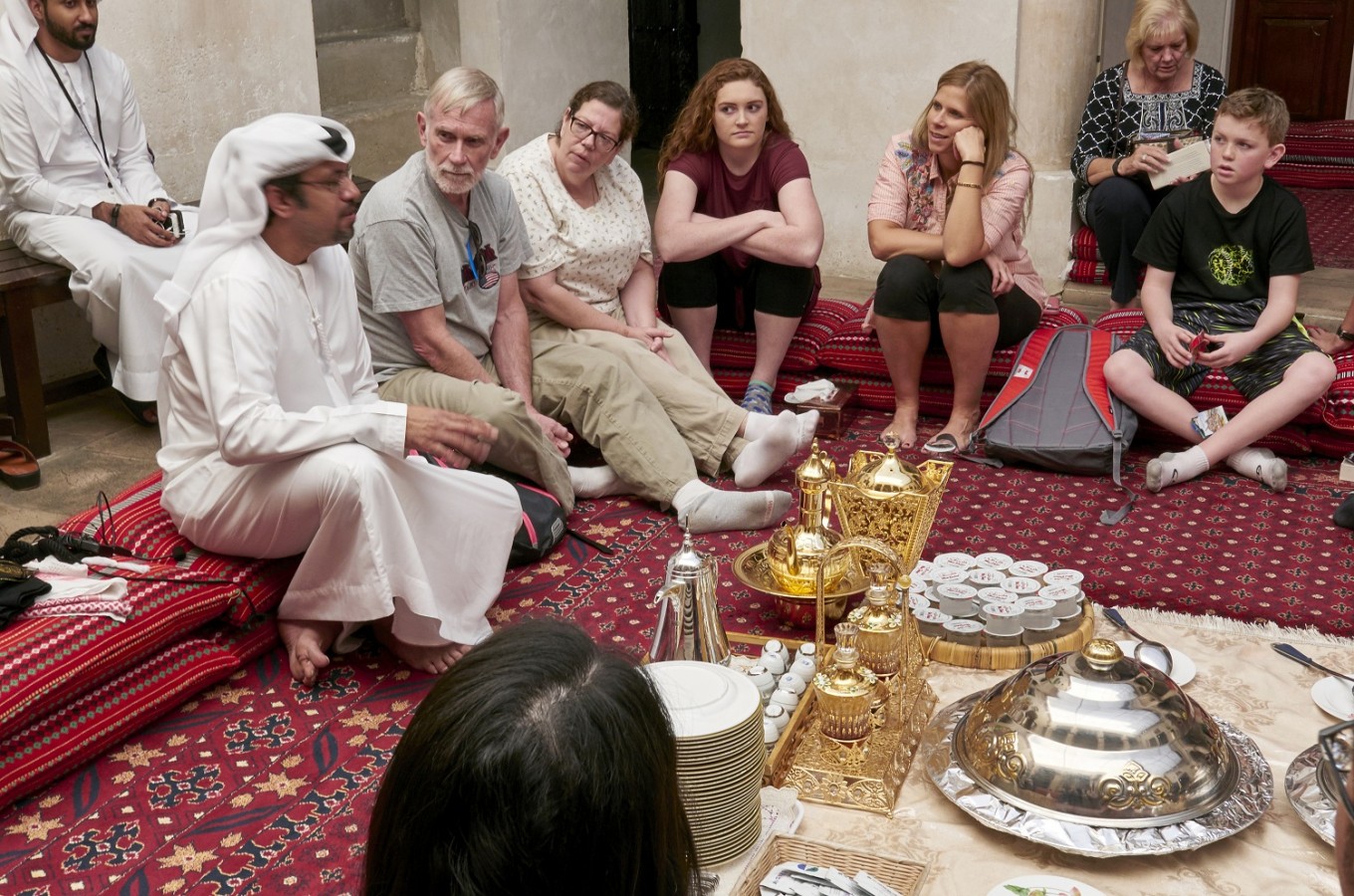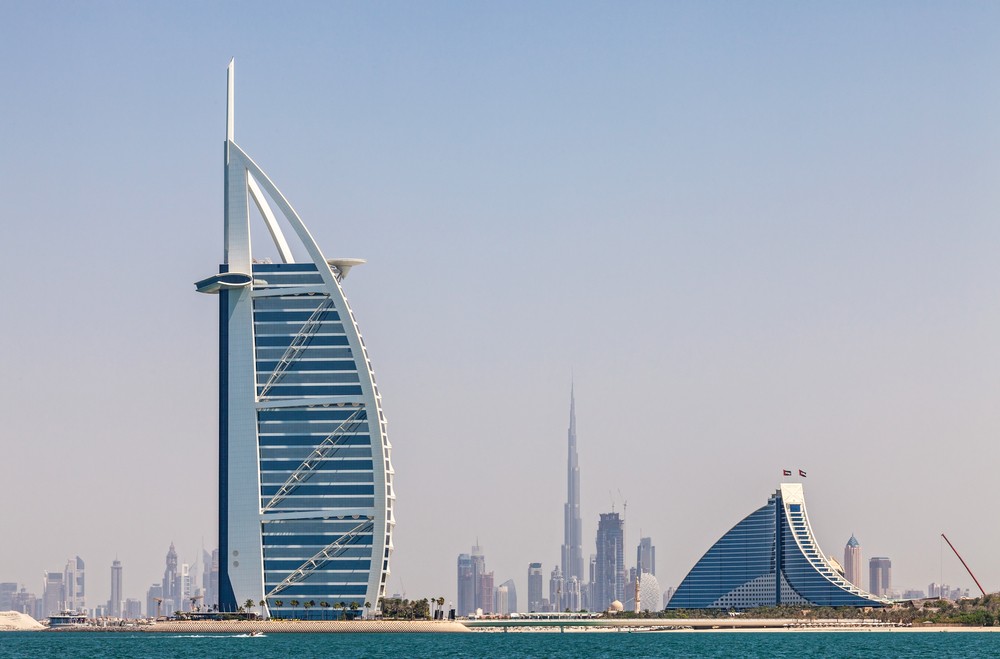Popular Reads
Top Results
Can't find what you're looking for?
View all search resultsPopular Reads
Top Results
Can't find what you're looking for?
View all search resultsWhat makes Dubai, Dubai
Dubai has something else in store for its visitors beyond its world-famous skyscrapers and sensational attractions.
Change text size
Gift Premium Articles
to Anyone
P
rior to my trip to Dubai in mid-December, my close friends and relatives expressed a sort of fascination and excitement upon hearing about the plan. Especially for those who have never actually set foot there, the United Arab Emirates (UAE)'s city indeed serves as a captivating destination thanks to its world-famous skyscrapers and endless list of sensational attractions. But what’s more astonishing is that all of these attractions are inside a country that was established only 45 years ago.
Dubai itself has been home to nomadic tribes for centuries. In the 18th century, the banks of Dubai Creek hosted members of a tribe called Bani Yas, who are said to have had natural commercial instincts and liberal attitudes, which later attracted traders from India and other Gulf countries. By late 1870s, the city had developed major souqs (market) and became the main port of the southern coast. Mainly trading spices, it was home to many Iranians, Omanis and tribal Bedouins.
According to the official history, Dubai also enjoyed prosperity from gold and pearls collected from offshore beds, but the industries collapsed in 1930s, resulting in the emirate falling into a deep depression. Many of its residents struggled to even find food and chose to migrate to other parts of the Arabian Gulf.
Following the implementation of favorable tax incentives, the city survived and even flourished as a trading hub. Though it had no mainstream electricity until 1961, Sheikh Rashid bin Saeed Al Maktoum, who ruled Dubai from 1958 to 1990, successfully developed the Dubai Creek in early 1950s, building up its banks with bulkheads and sheet piling.
(Read also: Shah Rukh Khan welcomes you to Dubai)
 A safari in the desert is one of Dubai's most popular activities for tourists.(JP/Keshie Hernitaningtyas)
A safari in the desert is one of Dubai's most popular activities for tourists.(JP/Keshie Hernitaningtyas)
Dubai’s fortunes changed after the discovery of oil in 1966. It welcomed a large number of foreign workers following the grant of concessions to international oil companies. From only 60,000 residents in 1960, the city hosted 183,000 people in 1975.
On Dec. 2, 1971, Dubai became part of the UAE alongside Abu Dhabi, Ajman, Fujairah, Sharjah and Umm al-Quwain. The country’s seventh emirate, Ras al-Khaimah, joined a year later.
Since then, Dubai’s infrastructure development has been unstoppable. It opened the 134-square kilometer Jebel Ali Port in 1979, the world’s largest man-made harbor and the biggest port in the Middle East. In 1985, it launched the Emirates airline, which was considered “a mad idea” at the time but is now frequently dubbed “The World’s Best Airline”, and opened the first of its many free zones to attract overseas investment. But it was the opening of the sail-shaped icon Burj Al Arab, “the world’s only seven-star hotel”, in 1999 that truly put the spotlight on Dubai, especially in the tourism scene. The list of the emirate’s mind-boggling man-made achievements has grown endlessly since then.
Welcoming more than 11 million visitors in 2013 and eyeing 20 million per year by 2020, Dubai’s economic growth and diversification relies heavily on the tourism sector. It is said that its income from oil is now less than 5 percent.
Home to 2.5 million people of over 200 nationalities, in which less than 20 percent are Emiratis, the federal absolute monarchy country’s city boasts openness and safety for residents and tourists alike. You can easily find visitors wearing bikinis at the beach or women walking alone on the streets after midnight. Yet, the desert background, the hot weather – except during winter, in which temperatures can reach below 20 degrees Celcius – and the sound of the Imam’s call to Fajr prayer as I was awaken in my hotel room that is just across from Dubai Mall, “the largest mall in the world”, and the nearby Burj Khalifa, “the world’s tallest structure”, serve as a reminder that you are actually in an Arabian country.
(Read also: Dubai opens massive Marvel-branded indoor theme park)
 The beach at the Jumeirah Beach Residence is packed with tourists during winter. The construction of the Dubai Eye can be seen from the beach. Its opening is slated for 2017.(JP/Keshie Hernitaningtyas)
The beach at the Jumeirah Beach Residence is packed with tourists during winter. The construction of the Dubai Eye can be seen from the beach. Its opening is slated for 2017.(JP/Keshie Hernitaningtyas)
Open doors, open minds
Multi-cultural Dubai’s high level of tolerance, especially toward religious diversity, is refreshing. And some local guides can be found openly sharing insights of Emirati culture, history, customs and religion in the Sheikh Mohammed Centre for Cultural Understanding (SMCCU). Headquartered in the oldest part of Dubai, the Al Fahidi Historical Neighbourhood, which was home to the emirate’s first wealthy traders at the end of the 19th century, the place encourages visitors to ask whatever intriguing questions are lingering on their minds – no matter how sensitive – and join the discussion as it aims to “open doors, open minds”.
Initiated by Sheikh Mohammed bin Rashid Al Maktoum, the Vice President and Prime Minister of the UAE and Ruler of Dubai, to reach out to and educate expatriates on UAE traditions and customs, the SMCCU has offered many activities for visitors since 1998, from heritage and Creekside tours to Jumeirah Mosque visits and Arabic classes. During our visit there, we experienced a traditional Emirati lunch that took place in its air-conditioned wind tower house – a typical Gulf house that is designed to draw the wind in and cool the home by capturing and accelerating daytime winds and using evaporative cooling to reduce indoor temperatures. A total of 45 people from different groups participated that day; all sitting on the cushioned floor surrounding the previously prepared meals. Our very humorous and friendly host, Abdullah, said that this was the Emirati way of living: sitting down on the floor and eating with their hands, no matter how luxurious the Emirati house is.
The lunch started with a welcome drink of hot Arabic coffee called qawah - a blend of lightly roasted Arabic beans, cardamom and saffron that are ground and boiled - in a tiny cup with no holder, which only allows 2-3 sips of coffee. “Why [the cup is] so little? Because [the coffee is] very hot; more than this, it will burn your fingers,” said Abdullah.
The coffee is sugarless since it is complemented with sweet dates, which are harvested locally (more than 40 varieties are grown in the country) and still make up 60 percent of the fruit and vegetable trade in the region. To ask for more coffee, you can simply bring forward the cup, or shake it if you are done. The silent server will either add more coffee or take the cup from you. “The silent server is usually the youngest member of the family. This is how you maintain [the Emirati] culture when [the Emirati] nationals are only 16 percent. It starts from home; if the base is strong at home, there’ll be no issue though the number is small.”
Abdullah continues with the history of UAE; how 70-80 years ago the nation only comprised of three people: the desert, fishermen and the mountains. “The only resources we had were dates, pearls and seafood. We depended on pearl diving at that time because the whole Gulf area was famous for natural pearls. The most beautiful, expensive pearls used to be here. Thus trade was very important, in which we used boats to reach other regions. Islam was spread through [this activity].”
(Read also: Dubai plans to beat own record with 'world's tallest' tower)
 Our host during the traditional Emirati lunch at the Sheikh Mohammed Centre for Cultural Understanding's (SMCCU) cultural lunch, Abdullah, is seen chatting with visitors.(JP/Keshie Hernitaningtyas)
Our host during the traditional Emirati lunch at the Sheikh Mohammed Centre for Cultural Understanding's (SMCCU) cultural lunch, Abdullah, is seen chatting with visitors.(JP/Keshie Hernitaningtyas)
As we were about to dine, Abdullah highlighted how we all should appreciate the food we enjoy. “[Prophet] Muhammad’ friends used to visit him. But when they said, ‘Assalamu’alaikum’, he finished his food first because he respects it as not everyone can eat. After done eating, then he answered ‘Wa’alaikumussalam’.”
The lunch itself, which was tasty and delicious, consisted of machboos (rice with meat or chicken that is seasoned with spices like cardamom, cloves, cinnamon, dried lemon, yellow raisins and lentels), vegetable salad, saluna (the Emirati stew that is a mixture of seasonal vegetables and meat, chicken or fish), white rice and, for dessert, ligamat (donuts of the Gulf, which is a moist batter "drop" deep fried in ghee and served with date syrup).
After dining, Abdullah explained basic local culture like the national attire for males and females. One of the most interesting things was when he described the gutrah, a traditional UAE headscarf, “When there’s a sandstorm in the desert, we wear gutrah to cover our mouth; and scare people on CNN,” which was followed by laughter from the audience.
Regarding why males wear white (kandura) and females wear black clothing (abaya), he said that it was easier that way. “Women wear black because white color is more see-through. It’s more comfortable for them since they can wear anything underneath; unlike men who have to wear a shirt [under their white long robe]. So [the color] black is given to women.”
He also stressed that women who did not cover their hair were not necessarily considered bad people. “Women wear burqa because, if her husband is away, and she has to go to the market, she needs to protect her face from the sand,” adding that these attire was more of a traditional thing, not religious.
Islam is the official religion of Dubai (and UAE) and it does apply Sharia law. However, our Indian guide, Marshall, who has lived in the city for 24 years, said that the UAE was so open and tolerant that people usually refrain from talking about religion. It also generally liberal in allowing foreigners to maintain their own religious practices and lifestyle. Perhaps it is one of the perks of being a minority in your own country as the population in UAE is said to be around 3 million, in which only 30 percent are UAE nationals.
As I laid my eyes on the construction of 210-meter high Dubai Eye off the coast of Jumeirah Beach Residence, “the world’s largest Ferris wheel” slated for opening in 2017, during my last day in the city, I found myself curious about what else the years ahead have in store for this ambitiously developed urban destination.







